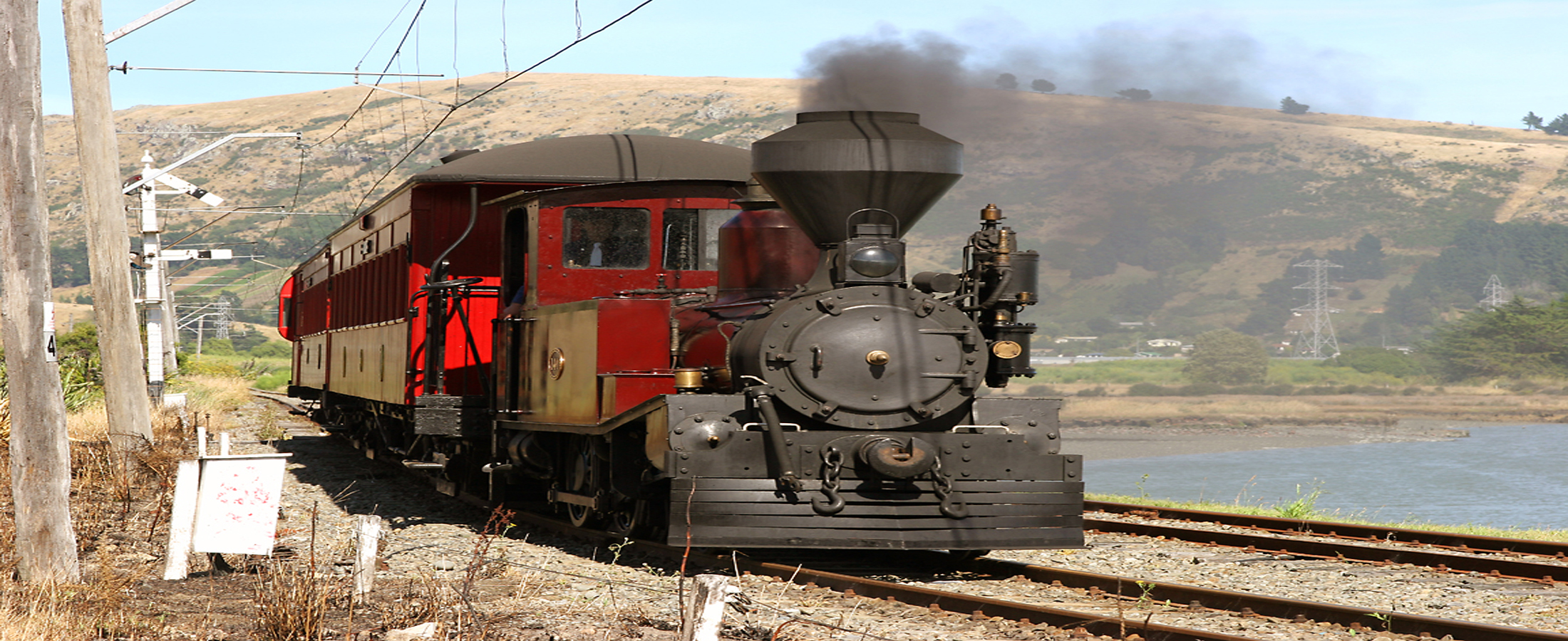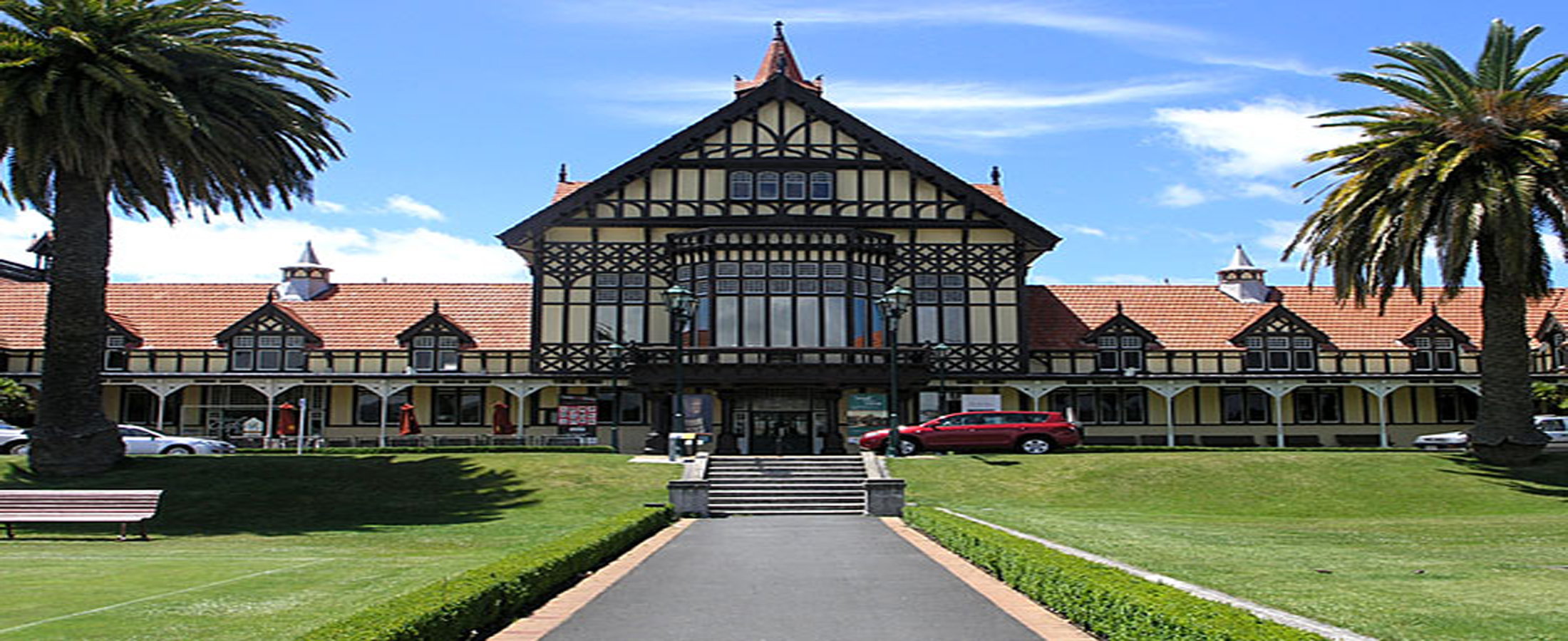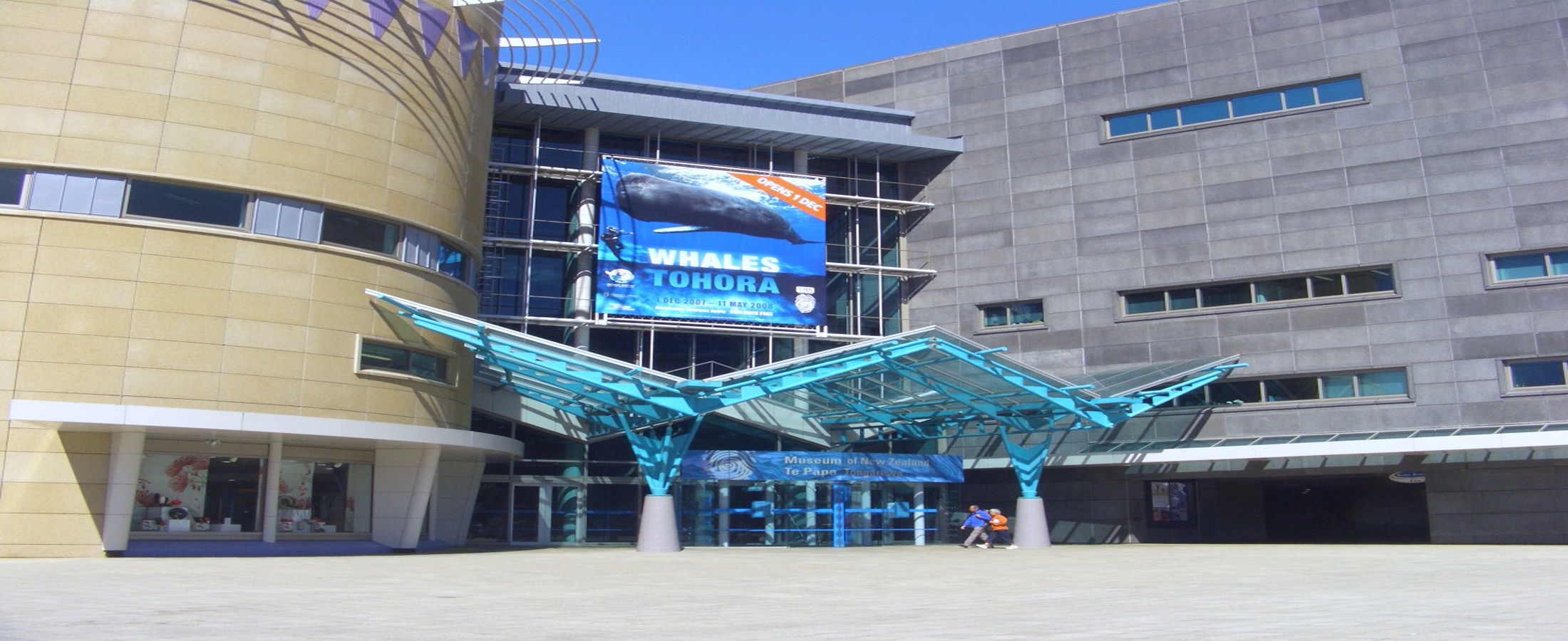New Zealand was discovered by Polynesians, 700 years ago, who settled here and developed a distinct Māori culture centred on kinship links and land. Abel Janszoon Tasman was the first European explorer to sight New Zealand on 13 December 1642. Sir Edmund Hillary, the well known climber, made his first major climb of his career at Aoraki Mount Cook in New Zealand.
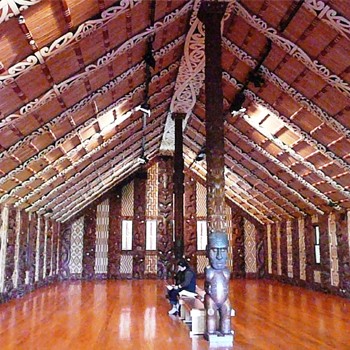
Auckland : Waitangi Treaty Grounds
Waitangi is a township located in the Bay of Islands on the North Island of New Zealand. The name means weeping waters in Māori. It was here on February 6th, 1840, that the Treaty of Waitangi was first signed between Maori and the British Crown.
The Treaty Grounds are part of the 506 hectare Waitangi National Trust estate, which was gifted to the nation by Lord and Lady Bledisloe in 1932. In the Deed of Gift, Lord Bledisloe stipulated that the estate was never to be a burden on the tax payer, and as such it is not government funded. The estate is administered by the Waitangi National Trust Board, whose members represent various sections of New Zealand people.
Plan my New Zealand Vacation Now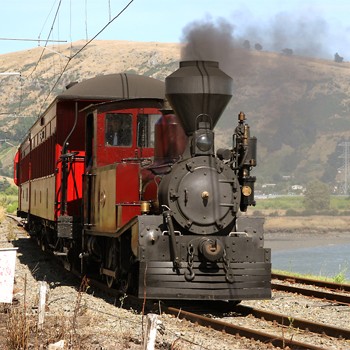
Christchurch : Ferrymead Heritage Park
Ferrymead Heritage Park is a museum in Christchurch, New Zealand, housing a number of groups with historical themes, the most frequent of which is transport. It is in the Heathcote Valley, at the site of New Zealand’s first public railway. Formerly known as Ferrymead Historic Park. This was the original name of the park. A number of groups came together in the early 1960s with a common interest in forming a museum of scientific and industrial history. Included in these was the Canterbury Branch of the New Zealand Railway and Locomotive Society, which had formed in the late 1950s to cater for local rail enthusiast interests.
Ferrymead Heritage Park takes you back into New Zealands past. Visit the Edwardian Township complete with Picture Theatre, School House, Church, Bakery, Jail and Railway Station. View the fascinating array of museum and heritage collections. Experience daily horse and carriage rides with tram rides each weekend. Browse timeless treasures and treats in the gift shop and have a fun-filled family day out while gaining fascinating insights into New Zealand’s heritage.
Plan my New Zealand Vacation Now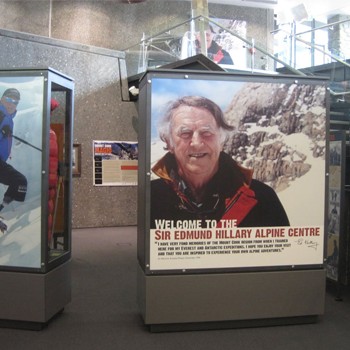
Mt.Cook : Sir Edmund Hillary Alpine Centre
At 3754m, Aoraki Mount Cook is New Zealand’s highest mountain and provided Sir Edmund Hillary, the well known climber, with the first major climb of his career. The ascent of Mount Cook’s difficult south face was Hillary’s first great mountaineering achievement and also became the training ground for his Everest and Antarctic expeditions. Sir Edmund continued to spend much of his time in the Mount Cook region and his death was considered a great loss to the local community.
Since opening in 2008, a purpose-built entertainment and education centre with a planetarium, museum, stargazing deck and the Hillary Gallery has become a key destination for visitors to the South Island. A full-dome planetarium with a 360-degree cinema is New Zealand’s first full dome digital planetarium. The NZ$7.5 million Sir Edmund Hillary Alpine Centre, adjoining the iconic Hermitage Hotel, attracts visitors of all ages keen to pay tribute to the legendary Kiwi who was a friend and mentor to many, humanitarian, ambassador and one of New Zealand’s most famous sons. Visitors can now stand beside his statue on the Alpine Centre’s Hillary Deck looking out to Aoraki Mount Cook where the famous mountaineer’s career began.
Plan my New Zealand Vacation Now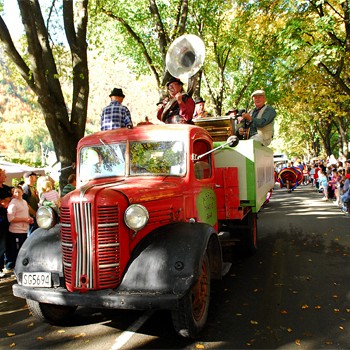
Queenstown : Arrowtown
Arrowtown is the much visited, historic, 4-season, southern hemisphere holiday destination, located only 20 minutes drive from Queenstown, South Island, New Zealand. Arrowtown is a former gold-mining town built on the banks of the Arrow River, once a rich source of gold in the 1860’s and now a sophisticated, multi-cultural town catering to the refined tastes of its visitors from around the globe. Arrowtown offers an ambiance not found elsewhere with its shops, restaurants, cafes, offices and galleries located within a tight precinct.
Arrowtown is recognised as the walking and biking centre of the Wakatipu region and many walking trails and cycle tracks of the area either start or finish in the town. Enjoy the range of activities from gold-panning, visiting the Lakes District Museum, teeing off on Millbrook’s international golf-course, shopping, dining to quite simply just relaxing in one of the beautiful hotels, motels, bed & breakfast or resort style accommodation options. The council holds very strict by-laws on appearances and preservation orders protecting over 70 historic buildings, and it is now the only historic town in New Zealand functioning as normal.
Plan my New Zealand Vacation Now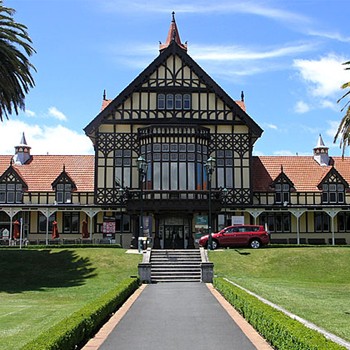
Rotorua : The Bath House
Opened in 1908 by Rear-Admiral Sperry of the American Great White Fleet, the Bath House represents the New Zealand Government’s first major investment in the tourism industry. The Bath House, which today houses Rotorua Museum of Art & History ‘Te Whare Taonga o Te Arawa’, was once a spa which offered therapeutic treatments. It is a monument to the New Zealand Government’s first major commitment to the tourist industry and is a readily recognised symbol of the city. The turn-of-the-century Government hoped to tempt wealthy northern hemisphere patrons to travel far from home to the “Great South Seas Spa”.
Water from nearby thermal springs was piped to private bathrooms and larger Aix-douche massage rooms. There were also a number of deep pools where chronic disorders were treated. The north wing accommodated male patients, while women were treated in the south wing.
Plan my New Zealand Vacation Now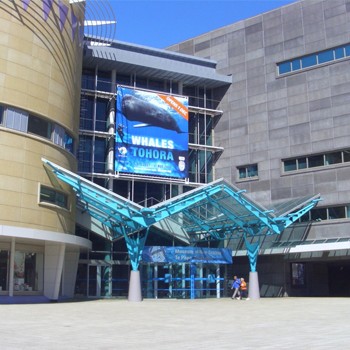
Wellington : Te Papa Museum
The Museum of New Zealand Te Papa Tongarewa is the national museum and art gallery of New Zealand, located in Wellington. It is branded and commonly known as Te Papa and Our Place; “Te Papa Tongarewa” is broadly translated as “the place of treasures of this land”. Te Papa’s first predecessor was the Colonial Museum, which opened in a small wooden building in 1865.
On 14 February 1998, Te Papa opened in Cable Street, Wellington. Construction had taken 4 years. Since Te Papa opened, more than 17 million people have visited the Museum. Their narrative-based, interdisciplinary, and interactive approach has attracted international attention, as has commitment to biculturalism. Their challenge is ongoing – to remain true to the community and relevant in an ever-changing world. The collections span five areas: Art, History, Pacific, Māori, and Natural Environment. The exhibitions are interdisciplinary and interactive, they have dynamic events and education programmes. There are also thriving commercial enterprises, including a publishing division, conference operations, and retail stores.
Plan my New Zealand Vacation Now
